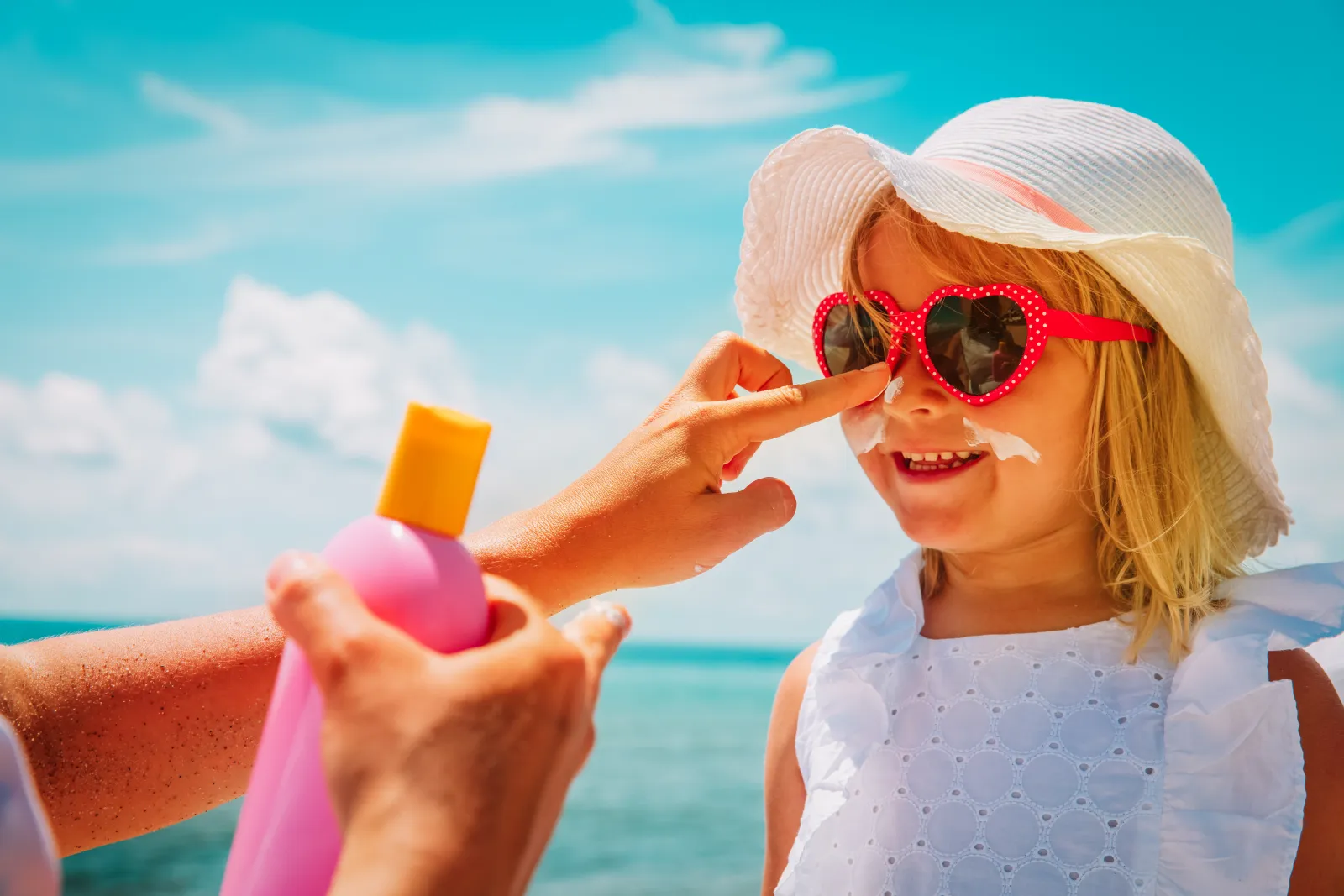
With summer in full swing, it's the perfect time to head outdoors and enjoy the sunny weather. But are you protecting yourself from potential risks? The goal of UV Safety Month each July is to spread the word about how important it is to protect everyone's skin from the harmful effects of UV rays. First, let's explain what UV rays are, and how they work.
What is UV Radiation?
Ultraviolet (UV) radiation are invisible rays that are part of the energy that comes from the sun. Overexposure to the sun's UV rays can cause damage to the skin and cause different types of skin cancer. It's always important to stay safe when your family is playing in the sun. While it may seem like a sunburn is a temporary irritation, it can leave long-lasting damage to your skin. According to the Melanoma Research Foundation, "Just one blistering sunburn during childhood can double the chances of developing melanoma later in life."
Five Ways to Protect Your Skin from UV Radiation
- Wear sunscreen. Everyone should use a sunscreen that is SPF 30 or higher every day — even on cloudy days. SPF stands for Sun Protection Factor. The SPF number tells you how long the sun's UV rays would take to darken your skin versus the amount of time without any sunscreen. Whenever possible, try to make sure you use a broad spectrum sunscreen, which protects you from both UVA rays (that cause sunburn) and UVB rays that cause skin damage (like aging). Make sure to reapply every two hours and, if swimming, follow the directions on the bottle.
- Wear the right clothing. Opt for clothes that provide different levels of UV protection such as long-sleeved shirts, or long pants. Colors can make a difference as well in your sun protection. Generally, the darker the color, the better the protection. Darker and more vivid colors absorb more UV rays than pale colors, making them less likely to reach your skin. You can also buy clothes labeled with Ultraviolet Protection Factor or UPF They are more expensive and provide a level of certainty, but common fabrics like cotton and denim that cover most of your body can offer protection as well.
- Find the shade. You can reduce your risk of skin damage and skin cancer by seeking shade under an umbrella, tree, or other shelter. Remember to use sunscreen or wear protective clothing even in the shade.
- Don't forget your hat & sunglasses. For the most protection, wear a hat with a brim all the way around that shades your face, ears, and the back of your neck. We immediately associate skin cancer as a negative effect of excessive sun exposure, but our eyes can suffer damage too. Sunglasses protect your eyes from UV rays and reduce the risk of cataracts. They also protect the tender skin around your eyes from sun exposure. Wrap-around or oversized styles offer more protection but make sure they block 99% - 100% of UV rays.
- Avoid tanning beds. Tanning beds can cause just as much harm as the sun. Tanning beds and sun lamps can emit both UVA and UVB radiation. According to the American Cancer Society, tanning bed use has been linked to an increased risk of melanoma, especially if a person started using them before the age of 30.
Am I Already at Increased Risk?
While skin cancer can affect anyone, these three major factors can increase your risk:
- Your skin. The lighter your skin, the higher the risk for melanoma. If you tend to burn easily or have a history of blistering sunburns, this could make your risk higher as well.
- Your moles. If you have a lot of moles (atypical nevi), or your moles happen to be on the larger side, your risk of melanoma could be higher.
- Your history. A family history of melanoma or if you've had melanoma in the past could place you at higher risk for melanoma. Also, a history of blistering sunburns can be a contributing factor.
July is a time for picnics, outdoor sports, and trips to the pool or the beach, relaxing with a drink in your hand and the breeze in your hair. Sounds cool, right? Of course it does! What isn't cool is skin and eye damage caused by excessive exposure to the sun's UV rays. However, following these simple tips can significantly help you protect yourself and your family from getting too much sun this summer.
If you have questions or concerns about overexposure to the sun, speak with your doctor. If you need or are looking for a new primary care provider, visit the Summit Medical Group website to find one near you.
